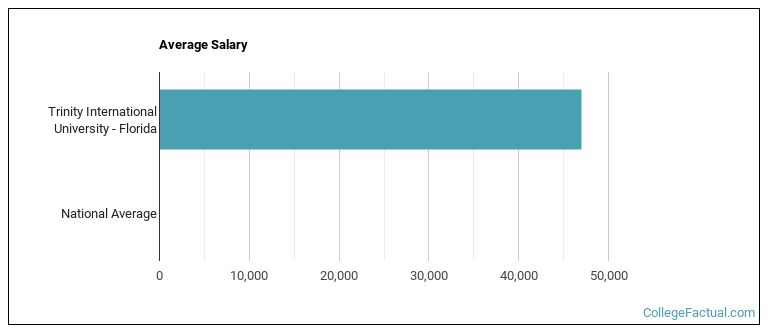 by our College Data Analytics Team
by our College Data Analytics TeamExplore the best ranked schools for the programs you are most interested in.
Trinity International University - Florida was not ranked in College Factual's 2025 Best Overall Colleges report. This could be for a number of reasons, including lack of data.
See all of the rankings for Trinity International University - Florida.
As long as you meet basic requirements, you should not have any trouble getting into Trinity International University - Florida since the school has an open admissions policy. Still, be sure to submit any requested materials and that your application is completed in full.
At Trinity International University - Florida, the student to faculty ratio is an excellent 3 to 1. That's much better than the national average of 15 to 1. This indicates that many classes will probably be small, and students will have ample opportunites to work closely with their professors and classmates.
During the 2017-2018 academic year, there were 100 undergraduates at Trinity International University - Florida with 50 being full-time and 50 being part-time.

See which majors at Trinity International University - Florida make the most money.
Get more details about the location of Trinity International University - Florida.

Contact details for Trinity International University - Florida are given below.
| Contact Details | |
|---|---|
| Address: | 9010 Sw 137Th Ave, Suite #101, Miami, FL 33186 |
| Phone: | 954-382-6400 |
| Website: | https://tiu.edu/florida/ |
| Facebook: | http://www.facebook.com/TrinityInternationalUniversity |
| Twitter: | http://twitter.com/TIU |
| Most Popular Majors | Bachelor’s Degrees | Average Salary of Graduates |
|---|---|---|
| Mental & Social Health Services | 12 | NA |
| Business Administration & Management | 10 | NA |
| General Psychology | 8 | $39,980 |
| Teacher Education Grade Specific | 4 | NA |
| Religious Education | 4 | $31,903 |
| Human Resource Management | 2 | NA |
| Theological & Ministerial Studies | 2 | NA |
| Criminal Justice & Corrections | 0 | NA |
Online learning is becoming popular at even the oldest colleges and universities in the United States. Not only are online classes great for returning adults with busy schedules, they are also frequented by a growing number of traditional students.
In 2022-2023, 53 students took at least one online class at Trinity International University - Florida. This is a decrease from the 118 students who took online classes the previous year.
| Year | Took at Least One Online Class | Took All Classes Online |
|---|---|---|
| 2022-2023 | 53 | 19 |
| 2021-2022 | 118 | 84 |
| 2020-2021 | 172 | 172 |
| 2018-2019 | 0 | 0 |
Learn more about online learning at Trinity International University - Florida.
If you’re considering Trinity International University - Florida, here are some more schools you may be interested in knowing more about.
Curious on how these schools stack up against Trinity International University - Florida? Pit them head to head with College Combat, our free interactive tool that lets you compare college on the features that matter most to you!
Footnotes
*The racial-ethnic minorities count is calculated by taking the total number of students and subtracting white students, international students, and students whose race/ethnicity was unknown. This number is then divided by the total number of students at the school to obtain the racial-ethnic minorities percentage.
References
More about our data sources and methodologies.